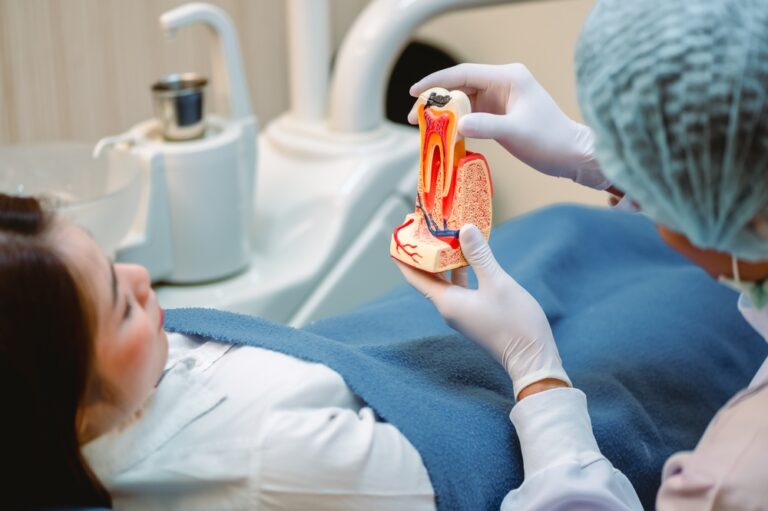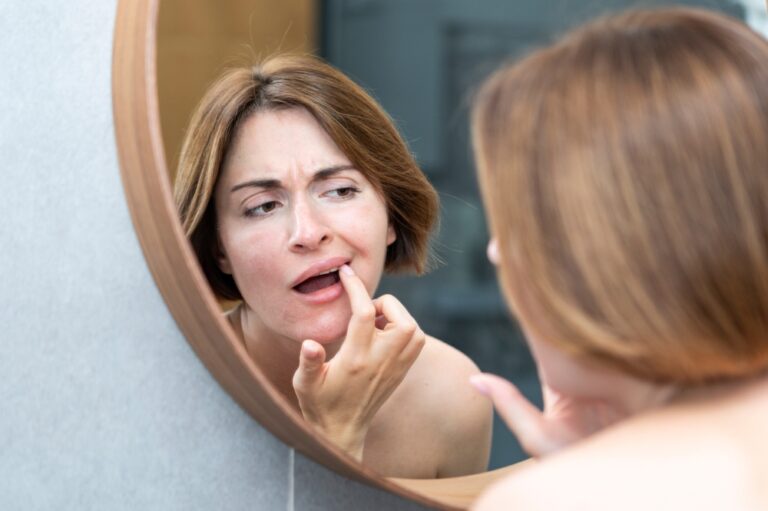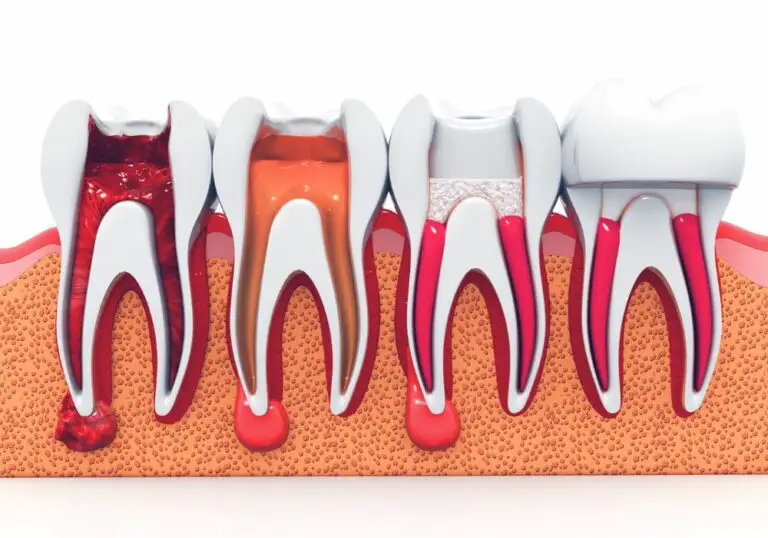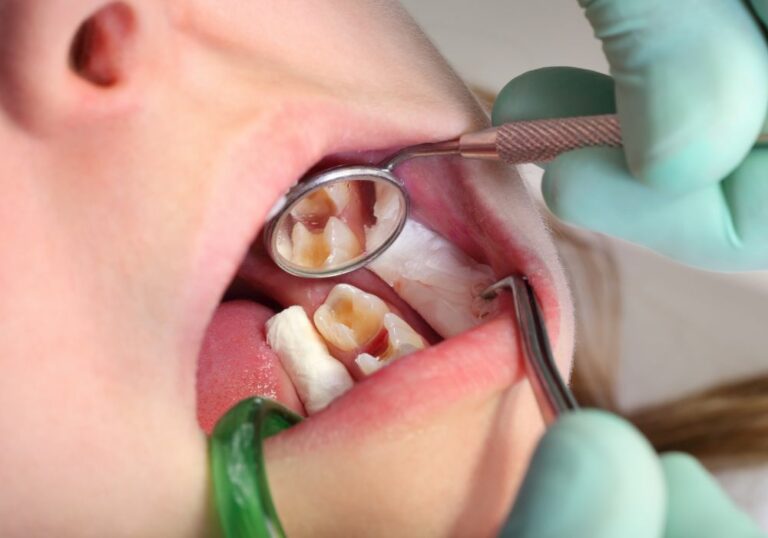When you smile, you want to show off your pearly whites, but what if you’re only showing your bottom teeth? It’s natural to wonder if this is normal or if there’s something wrong with your smile. The truth is, it depends on a few factors.
One of the main factors that determines whether your bottom teeth should show when smiling is the shape of your jaw and teeth. In a full smile, both your upper and lower teeth should be visible, but the amount of each that shows can vary. Some people have a more prominent lower jaw, which can cause their bottom teeth to show more. Others may have a smaller upper jaw, which can make their upper teeth less visible. Additionally, the size and shape of your teeth can also affect how much of them show when you smile.
Understanding the Anatomy of a Smile

When it comes to smiling, there are many factors that can affect how your smile looks. The anatomy of a smile is a complex interplay between your teeth, lips, and facial muscles. Understanding this anatomy can help you determine whether your smile is normal or if there are any issues that need to be addressed.
Upper Teeth Visibility
The visibility of your upper teeth is an important aspect of your smile. Ideally, when you smile, your upper teeth should be visible, but not too much. If your upper teeth are too visible, it can create a “gummy” smile, which can be unattractive. On the other hand, if your upper teeth are not visible enough, it can make your smile look incomplete.
One factor that can affect upper teeth visibility is the position of your upper lip. If your upper lip is too thin or too short, it may not cover your upper teeth enough, resulting in a gummy smile. In contrast, if your upper lip is too thick or too long, it may cover your upper teeth too much, resulting in an incomplete smile.
Lower Teeth Visibility
The visibility of your lower teeth is also an important aspect of your smile. When you smile, your lower teeth should be visible, but not too much. If your lower teeth are too visible, it can make your smile look unbalanced. On the other hand, if your lower teeth are not visible enough, it can make your smile look incomplete.
One factor that can affect lower teeth visibility is the position of your lower jaw. If your lower jaw is too large or too protrusive, it can make your lower teeth appear oversized and overly exposed in a smile while the upper teeth remain obscured and too far back. In contrast, if your lower jaw is too small or too retruded, it can make your lower teeth appear hidden and not visible enough.
In conclusion, understanding the anatomy of a smile can help you determine whether your smile is normal or if there are any issues that need to be addressed. If you are concerned about your smile, it is important to consult with a dental professional who can help you determine the best course of action.
Factors Influencing Teeth Visibility

When it comes to smiling, teeth visibility is an important factor to consider. While some people have naturally visible teeth, others may not show their teeth as much. The following are some of the factors that can influence teeth visibility:
Natural Smile Structure
The structure of your face and jaw can play a role in how much your teeth show when you smile. People with shorter upper lips and longer lower lips tend to show more of their lower teeth. On the other hand, people with longer upper lips and shorter lower lips tend to show more of their upper teeth. Additionally, the shape and size of your teeth can also affect how much they are visible when you smile.
Age and Teeth Visibility
As we age, our teeth and gums can change, which can affect how much our teeth show when we smile. For example, receding gums can make teeth appear shorter and less visible. Additionally, as we get older, our skin loses elasticity, which can cause our lips to thin out and cover less of our teeth when we smile.
Cultural Differences in Smiling
Cultural differences can also play a role in how much teeth are visible when smiling. In some cultures, showing teeth when smiling is considered a sign of happiness and friendliness. In other cultures, however, showing teeth when smiling may be seen as rude or aggressive. Additionally, some people may feel self-conscious about their teeth and choose to smile with their mouth closed or cover their mouth when laughing.
In conclusion, there are various factors that can influence teeth visibility when smiling. While some of these factors are natural and cannot be changed, others can be addressed through dental treatments or lifestyle changes. Ultimately, the most important thing is to feel confident and comfortable with your smile, regardless of how much your teeth are visible.
Cosmetic Dentistry and Smile Aesthetics
If you’re unhappy with the appearance of your smile, cosmetic dentistry can help you achieve the look you want. Smile aesthetics is an important aspect of cosmetic dentistry, and there are several procedures available to enhance the appearance of your teeth and gums.
Teeth Whitening
Teeth whitening is a popular cosmetic dentistry procedure that can help you achieve a brighter, more youthful-looking smile. This procedure involves applying a special bleaching agent to your teeth to remove stains and discoloration. There are several different teeth whitening options available, including in-office treatments, take-home kits, and over-the-counter products.
Orthodontics
Orthodontic treatments, such as braces or clear aligners, can help improve the alignment of your teeth and correct bite issues. Straightening your teeth can not only improve the appearance of your smile but also improve your oral health by making it easier to clean your teeth and gums.
Veneers and Crowns
Veneers and crowns are both cosmetic dentistry procedures that can help improve the appearance of your teeth. Veneers are thin, custom-made shells that are bonded to the front of your teeth to improve their shape, size, and color. Crowns, on the other hand, are tooth-shaped caps that are placed over a damaged or decayed tooth to restore its shape, size, and strength.
When considering cosmetic dentistry procedures, it’s important to consult with a qualified dentist to determine which options are best for your individual needs and goals. With the right treatment plan, you can achieve the beautiful, confident smile you’ve always wanted.
Psychological Impact of Smiling

Smiling is a universal human expression that conveys happiness, joy, trust, and other positive emotions. However, the psychological impact of smiling goes beyond just expressing emotions. Smiling can have a significant impact on your overall well-being and how others perceive you.
Positive Impact on Mood
Smiling can have a positive impact on your mood, even if the smile is forced. Studies have shown that the act of smiling triggers brain chemicals related to positivity, which can boost your mood and reduce stress levels. Additionally, smiling can improve your self-esteem and make you feel more confident.
Influence on Perception
Smiling can also influence how others perceive you. A genuine smile can make you appear more approachable, friendly, and trustworthy. Conversely, a lack of smiling can make you seem unfriendly or unapproachable.
Cultural Differences
It’s important to note that cultural differences can impact the perception of smiling. In some cultures, smiling is seen as a sign of weakness or insincerity. In other cultures, smiling is used to mask negative emotions or discomfort. It’s important to be aware of these cultural differences when interacting with people from different backgrounds.
Conclusion
Overall, the psychological impact of smiling is significant. Smiling can improve your mood, boost your self-esteem, and influence how others perceive you. So, don’t be afraid to show off your smile, even if your bottom teeth show a little bit!
Maintaining a Healthy Smile
Taking care of your teeth and gums is crucial for maintaining a healthy and beautiful smile. Here are some tips to help you keep your teeth and gums in good shape.
Regular Dental Check-ups
Regular dental check-ups are essential for maintaining a healthy smile. During a dental check-up, your dentist will examine your teeth and gums for any signs of decay, gum disease, or other oral health problems. They may also take X-rays to check for any hidden issues.
It is recommended that you visit your dentist at least twice a year for a routine check-up and cleaning. This will help to prevent any oral health problems from developing and catch any issues early on when they are easier to treat.
Oral Hygiene Practices
In addition to regular dental check-ups, practicing good oral hygiene is essential for maintaining a healthy smile. Here are some oral hygiene practices that you should follow:
- Brush your teeth twice a day with a fluoride toothpaste.
- Floss at least once a day to remove plaque and food particles from between your teeth.
- Use mouthwash to kill bacteria and freshen your breath.
- Limit sugary and acidic foods and drinks, as they can damage your teeth and lead to decay.
- Drink plenty of water to help rinse away food particles and bacteria.
By following these oral hygiene practices and visiting your dentist regularly, you can help maintain a healthy and beautiful smile.
Frequently Asked Questions
How can I make my bottom teeth show when I smile?
If you want your bottom teeth to show more when you smile, you can try to adjust your lip position. Try to relax your lips and lift them slightly to expose more of your lower teeth. However, be careful not to overdo it and force your lips too much, as this can look unnatural.
What can I do if my upper lip covers my teeth when I smile?
If your upper lip covers your teeth when you smile, you can try to adjust your lip position as well. Try to lift your upper lip slightly by using the muscles around your mouth. You can also try to smile with a more open mouth or practice smiling in front of a mirror to find the best angle that shows your teeth.
Is it normal to not show bottom teeth when smiling?
Yes, it is normal for some people to not show their bottom teeth when they smile. This can be due to the shape of their jaw or the position of their teeth. However, if you are concerned about your smile, you can talk to your dentist or orthodontist to see if there are any options to improve it.
What can cause a lack of tooth display when smiling?
A lack of tooth display when smiling can be caused by several factors, such as a gummy smile, a short upper lip, or misaligned teeth. In some cases, it can also be due to habits like teeth grinding or clenching. If you are concerned about your smile, it’s best to consult with a dental professional to determine the cause and appropriate treatment.
How can I fix not showing my upper teeth when talking?
If you are not showing your upper teeth when talking, it may be due to the position of your tongue or the way you articulate your words. You can try practicing speaking with a more open mouth and enunciating your words clearly. You may also want to consult with a speech therapist to address any underlying issues.
Why do some people’s smiles show more teeth than others?
The amount of teeth shown when smiling can vary depending on several factors, such as the shape of the jaw, the position of the teeth, and the size of the lips. Some people may have broader smiles that show more teeth, while others may have narrower smiles that show fewer teeth. It’s important to remember that everyone’s smile is unique and there is no “perfect” smile.







